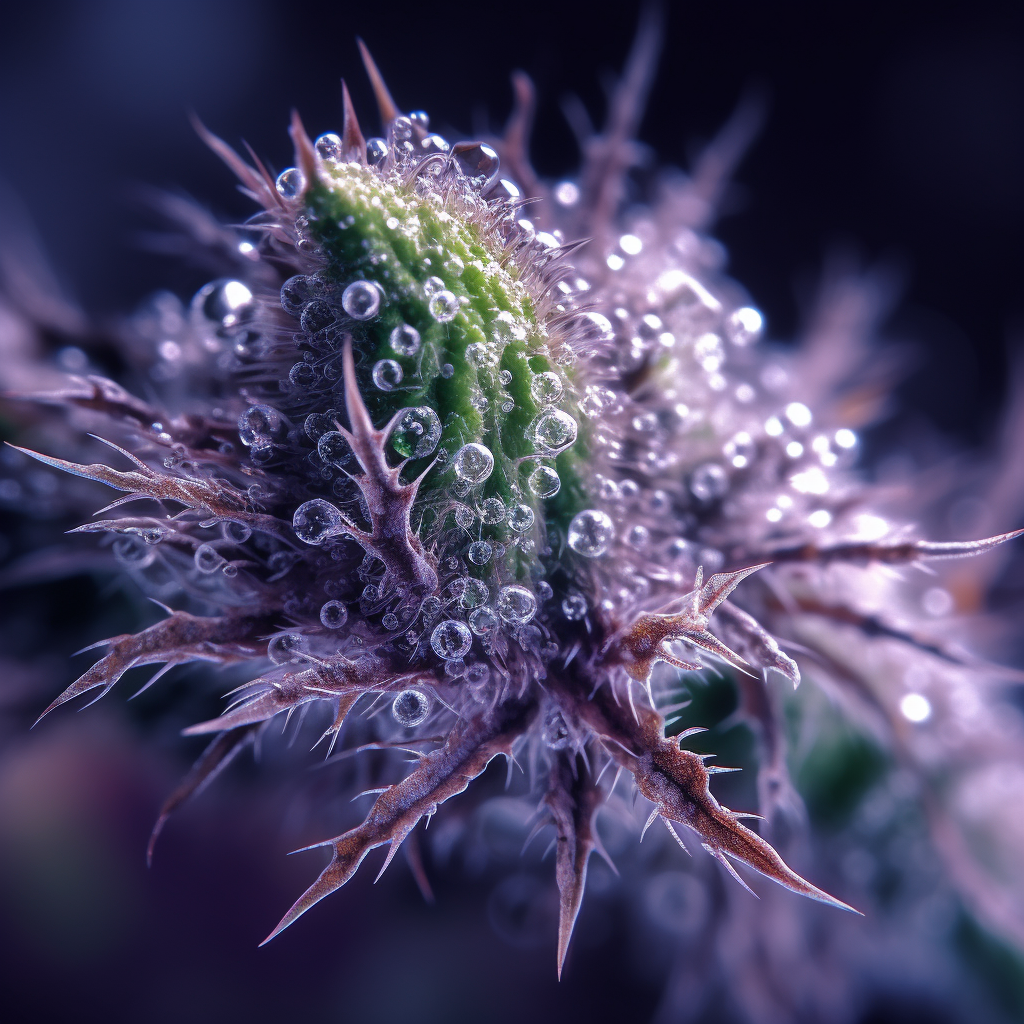Trichomes, which may appear as tiny, almost transparent, hair-like extensions, are distributed over the surface of cannabis plants.
They are of high significance in the world of cannabis due to the essential roles they perform in the life cycle of the plant and in defining the quality of the product. Let’s look deeper into the functionalities of trichomes and how they contribute to the unique characteristics of cannabis plants:
The Epicenter of Cannabinoid Production: On a fundamental level, trichomes function as miniature factories for the production of cannabinoids, the chemical compounds that are endemic to the cannabis plant. Cannabinoids such as Tetrahydrocannabinol (THC) and Cannabidiol (CBD), which are primarily responsible for inducing the various physiological and psychological effects linked with cannabis consumption, are produced within these trichomes. The varying levels of THC and CBD found in different strains of cannabis are essentially dependent on the trichome production.
Synthesis of Terpenes: In addition to being the manufacturing hub for cannabinoids, trichomes are also known to produce terpenes. Terpenes are organic compounds that imbue different strains of cannabis with their distinctive scents and flavors. Ranging from citrusy and fruity to earthy and pine-like, these aromas are all courtesy of the trichomes’ activity. Moreover, some terpenes are believed to synergize with cannabinoids, influencing the overall effects experienced by the cannabis user in what is often referred to as the “entourage effect.”
Guardians of the Plant: Apart from their role in producing cannabinoids and terpenes, trichomes also act as the plant’s natural defense mechanism. Their bitter taste and strong odors act as a deterrent for many insects and animals, discouraging them from feasting on the plant. Additionally, the physical structure of trichomes serves as a protective layer that shields the plant from harsh environmental conditions such as high winds and damaging ultraviolet (UV) rays.
When scrutinizing a cannabis flower, trichomes can provide valuable insights regarding the plant’s potency. An abundance of trichomes usually suggests a higher concentration of cannabinoids, making these plants more potent. This fact explains why some of the most potent cannabis strains exhibit a frosty or sugary appearance, indicative of their high trichome content.

The maturity of the trichomes plays a crucial role in the cannabis cultivation process. Observing the development of trichomes can provide growers with a fairly accurate estimate of when the plant will reach its peak potency, indicating the optimal time to harvest.
Trichomes change in color as they mature, typically progressing from clear to a cloudy white, and eventually turning amber. This transition not only suggests the maturation of trichomes but also signals a shift in the cannabinoid profile of the plant, thereby aiding growers in their quest to produce a cannabis crop with specific desired characteristics.
Trichomes are not just trivial outgrowths on the surface of the cannabis plant. They are the powerhouses that drive the plant’s unique features and are instrumental in the synthesis of the chemicals that distinguish one strain from another.
Appreciating the role of trichomes leads to a deeper understanding of the complex biology of cannabis, and provides insights that are not only useful for cultivators, but also for consumers seeking specific effects or flavors from their cannabis products.





